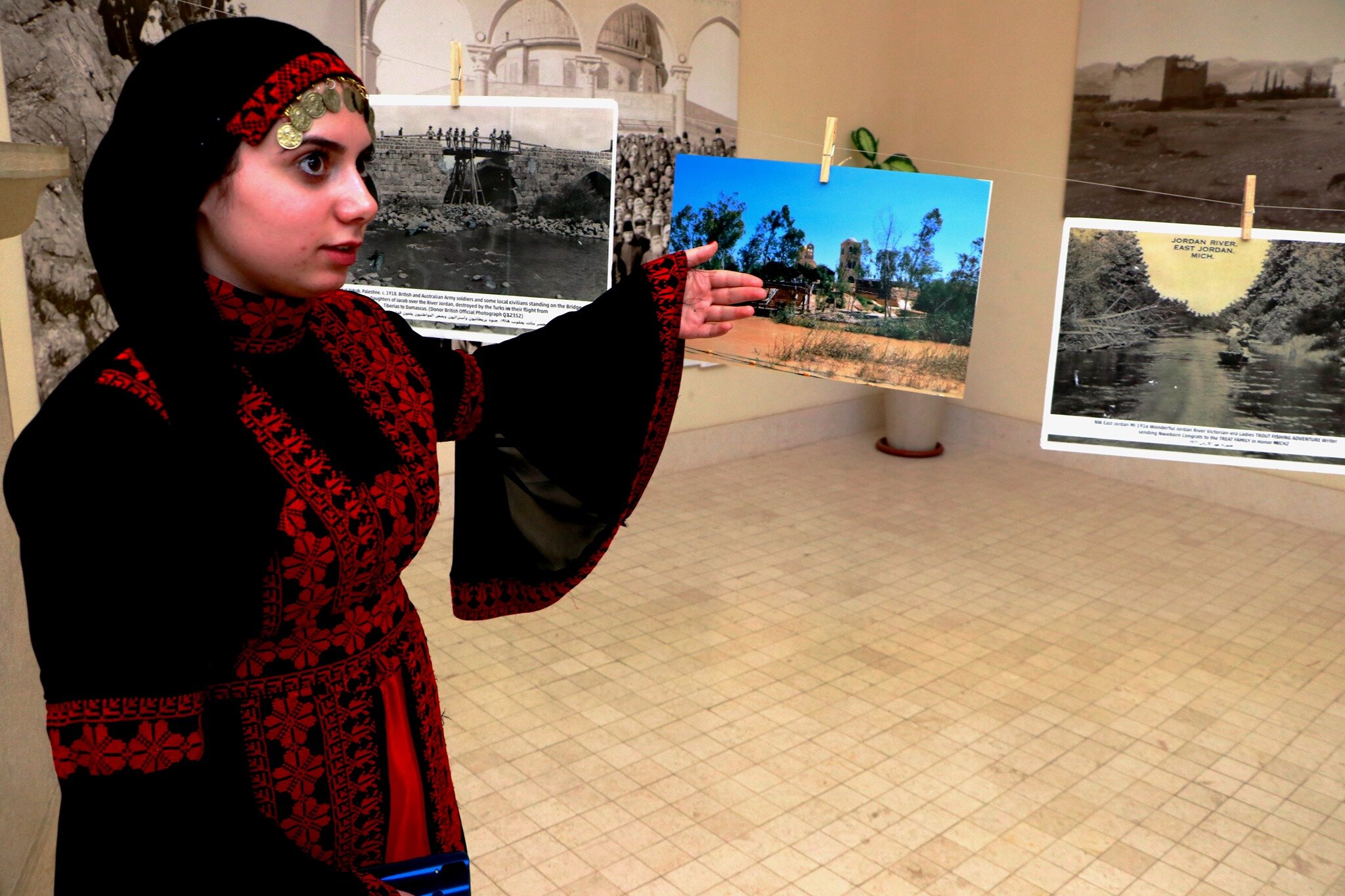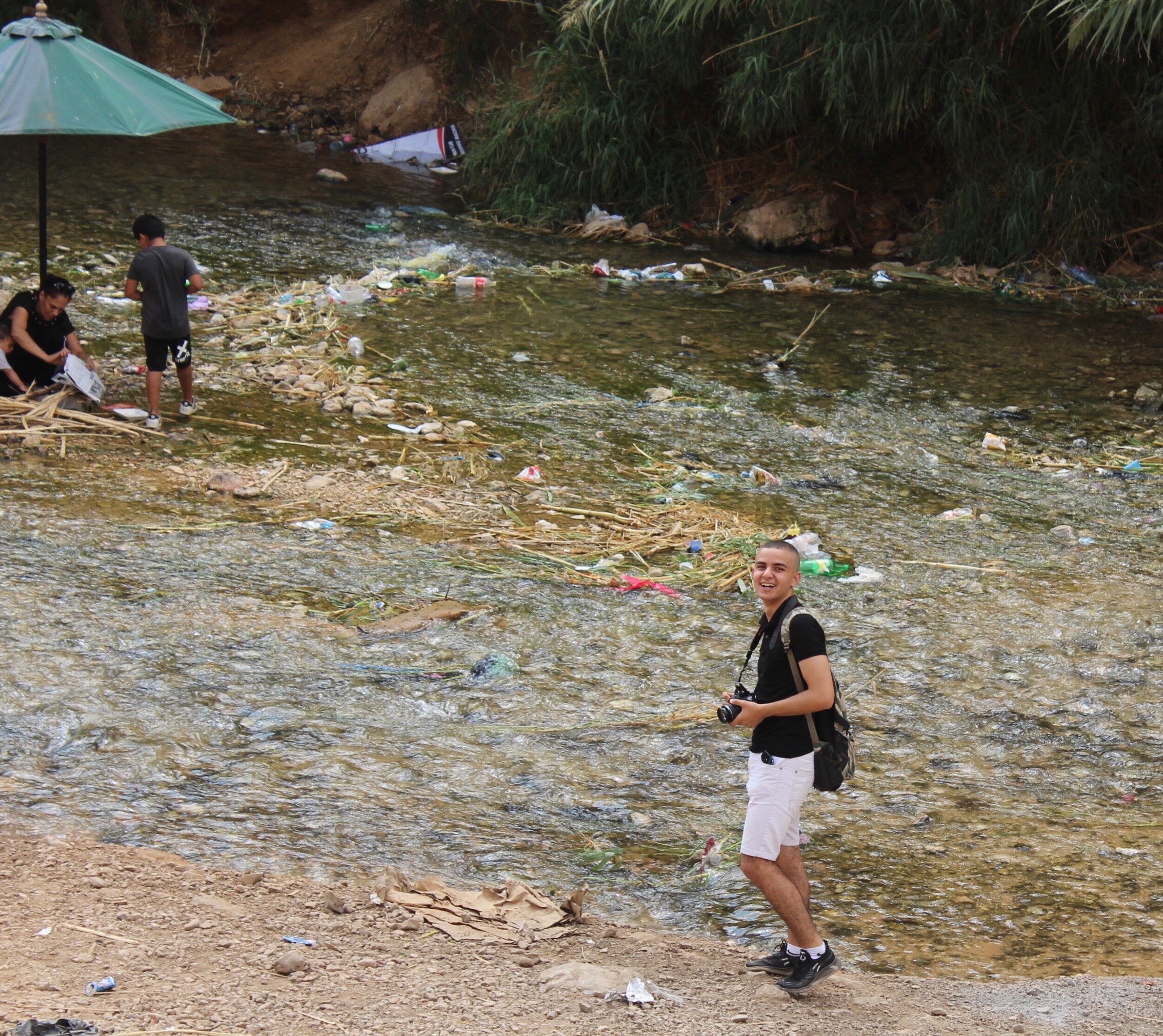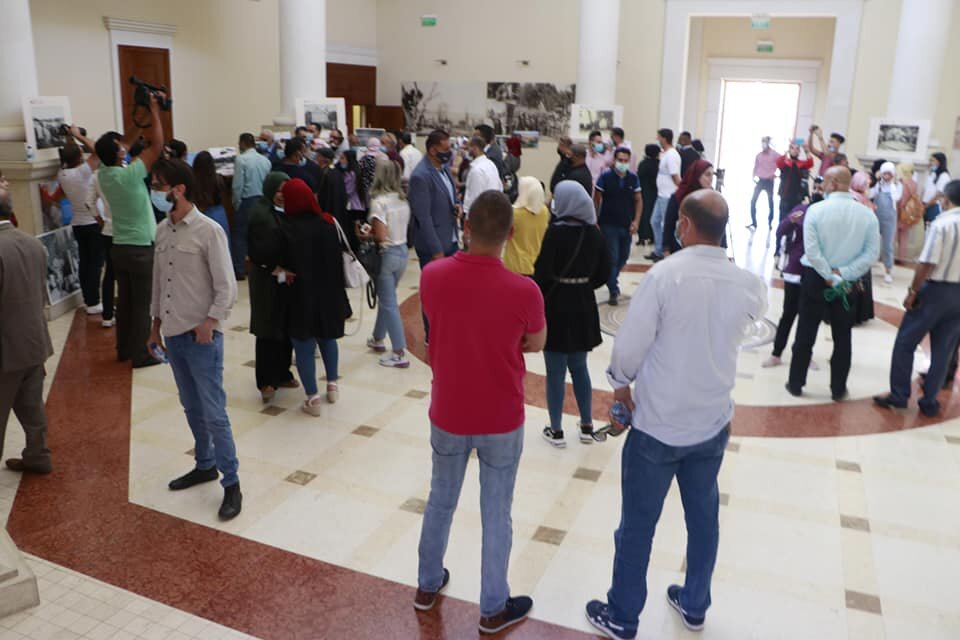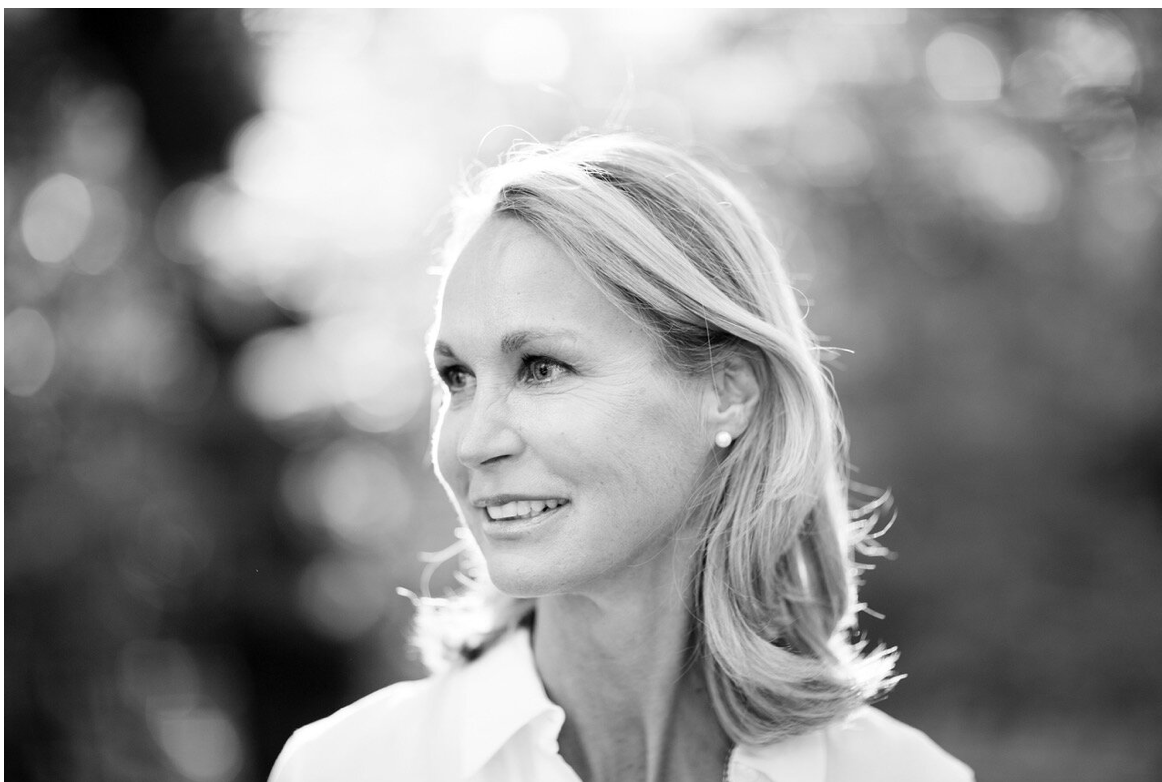Peace Building and Eco-Justice in the West Bank Through a New Lens
By Saskia Keeley
“My name is Suad Sami. I am a student from Bethlehem, and I have taken my photo at the Jordan River Baptism site, which is the point where Palestinians have been allowed to enter the Jordan River since 1976. I had such a bad feeling when I saw how people unfortunately cooperated to damage this beautiful source of water.”
In October 2020, young Palestinian students involved in the EcoPeace-Middle East Educational Program participated in a photo workshop. This program with young leaders promotes experiential learning around regional environmental issues. Photography was a way to see their surroundings, to assess the impact of the geopolitical conflict, and to take an active role in capacity building and environmental awareness. Through the means of a camera, fourteen young environmental activists from various cities and communities in the West Bank embarked on a journey toward inner change that defied the obstacles I’d perceived. Constrained by the complications of Covid-19, I was forced to alter my program’s design and process and ask an important question: Am I the catalyst for conversation and inner change or do the camera and the photographs have that power? The shattering created by wars, borders, governments, and religions has also extended to the environment. This gave rise to the formation of EcoPeace-Middle East. For the past 25 years, they have brought together cooperating neighbors from Israel, Palestine and Jordan to restore the Jordan River and to engage in education and advocacy.
In my work as a photo workshop facilitator in fractured communities, I join with others addressing systemic inequality and injustice. Empathy and cultural sensitivities are often the missing pieces in the complicated puzzle of community conflicts. The collaboration between EcoPeace and the Accompagnateur Workshops* was designed to develop and nurture these values, while also highlighting the connection between ourselves and the environment.
Around 600,000 people -- Israelis, Palestinians, and Jordanians -- live on both sides of the Lower part of the Jordan River. The river’s environment has declined drastically during the past sixty years. Its ecological systems have been degraded and its water diverted. EcoPeace, an international trailblazer in the practical application of environmental peacebuilding to advance water security, has taken on what was seen as impossible: restoring the flow of fresh water from the Sea of Galilee to the Dead Sea, a region that has almost dried out, and continues to do so today. EcoPeace’s two primary goals are to advance cross-border cooperation to protect shared water resources, and to foster peace and cooperation through trust-building based on the shared interests of neighboring communities. Especially for Palestinians and Jordanians, access to water is an absolutely critical issue and must be addressed urgently for the sake of human life and regional security.
The main objective of our partnership was to provide an educational activity through which the participants could document their local environment through the lens of a camera, using their own sensibility and experience to personalize their visual narrative. The challenge of Covid-19 forced new parameters for my photo workshops. The pandemic has impelled a reimagination of our lives and for those of us who use art as vehicles for social good, this was no different. With severe travel restrictions in place, while this workshop was happening in Palestine, I was in Manhattan. Having had to now remove myself from the equation revealed my uncertainty about the potential for personal transformation through the power of the internal witness. These doubts also raised the question of how much my voice and presence guided participants to my methodology’s predetermined outcomes.
Through online conversations and Zoom tutorials, the students learned how to use the high-quality digital cameras they received on loan for this project. The Accompagnateur Workshops owns 20 cameras for numerous photo projects in the West Bank. The mission is always one of fostering dialogue, transformation and peace in the region. With the limitations of teaching remotely, we focused on the participants’ good command of composition and light. The goal was to have well-exposed pictures that highlight regional environmental challenges.
There were three separate outings whose focus was to illustrate the current state of the Jordan Valley, with its river running through it as well as the Dead Sea: two bodies of water crucial to the region. Deepening their exposure to the complex environmental reality increased their awareness. It encouraged them to examine interconnections and promote critical thinking.
One participant, Jowan Hilo said: “I took this photo of the Lido. It used to be a famous restaurant that attracted tourists and the local elite to the Dead Sea shore. The sea used to lap the terrace of the restaurant, but no more today as the water has receded far away.”
The restaurant now overlooks acres of dry land. Due to extraction from the Jordan River, the Dead Sea water level has dropped an average of a meter per year. Since 1967, the level has dropped over 30 meters (100 feet.) The Lido now stands abandoned and dilapidated.
The two other outings brought them to the Jordan River. Suad Sami wrote: “This was an unforgettable experience. What we witnessed is a river that is no longer clean and that is now as small as a canal.”
At the end of each of the prior workshops I’ve hosted, I would leave greatly affected by my participants, moved by their willingness to open up and show vulnerability and authenticity. I wasn’t given this opportunity with this group, even though we met twice on Zoom. Yet the storytelling they did for a photo exhibition on view in Jericho (West Bank), which drew impressive crowds for the art show’s opening, aroused viewers’ emotions and captured their attention. Harnessing vivid insights alongside their photographs’ own language proved to be an avenue of deeper expression.
How these young people now view the land expands the lens through which they see themselves and the triadic connection between past, present, and future. The sustainability of our environment is a stronger connective force than they may have realized before this project. The allure of the exhibit and the conversations the photos sparked were powerful demonstrations of a picture’s ability to create dialogue. The students’ observations and reflections, initiated by THEIR own work, proved once again the power of the internal witness.
Ecological resilience can feel quite distant from individual action; the opportunity for change is often unclear or overwhelming, the subject itself too abstract. A continent away, I am moved by their photo stories, by the collective nature of the problem, and by our shared responsibility to bring forth a solution. Narratives create meaning. The EcoPeace participants gave voice to a collective narrative that sustains their own personal life story. Our goal was to help these young people discover their own stories, create new ones, and develop leadership. To see a landscape through the eyes of people who know it best creates intimacy. These authentic glimpses of a more personal reality allow for a shift in perspective, helping to close the distance between hearts and minds.
*The Accompagnateur Workshops are photo workshops that help bridge divides in communities in conflict and bring empowerment to marginalized groups. They are about finding common humanity.
Saskia Keeley: My work as documentary photographer brings me into contact with people who are suffering from lack of access to issues of human dignity. I use my skills as a counselor, photographer and workshop leader to enable people from marginalized communities to see themselves, the world they live in, and their opportunity to enact changes to improve their lives, for themselves and others.
All images are courtesy of Saskia Keeley.


















